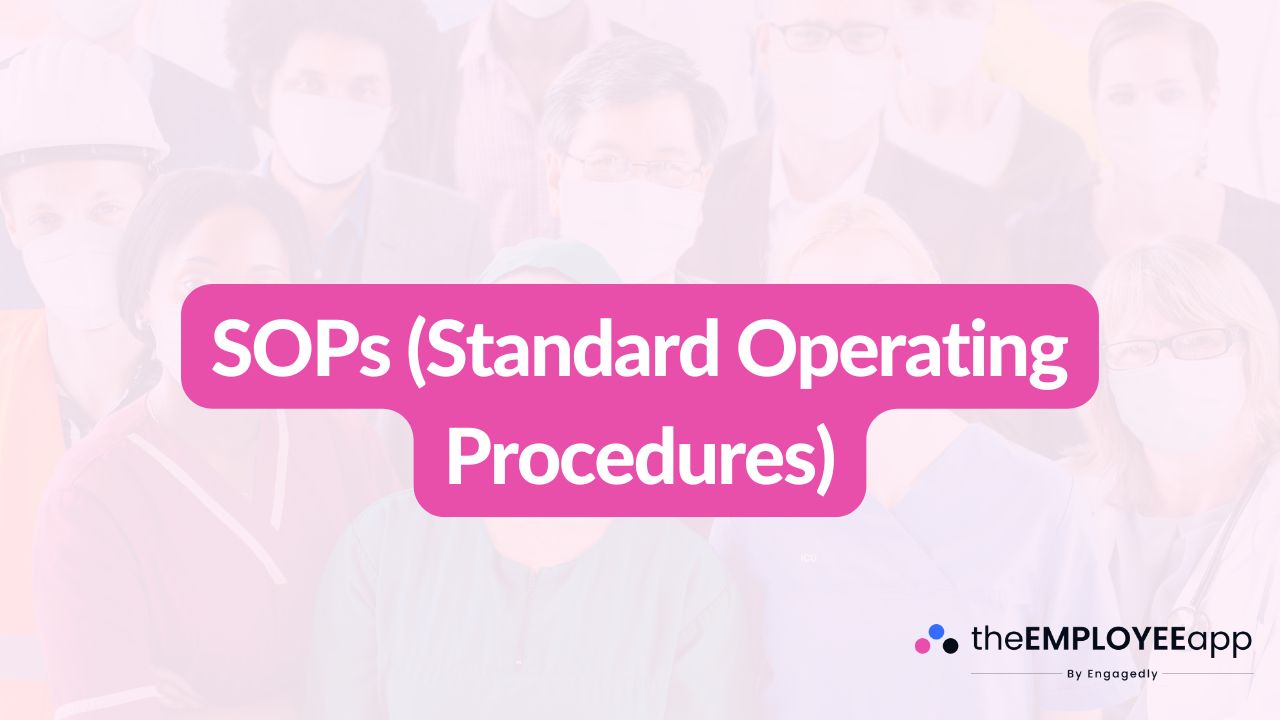
SOPs (Standard Operating Procedures) are step-by-step instructions designed to guide employees through routine processes and tasks. They provide clarity, reduce errors, and ensure that work is completed consistently across an organization. In simple terms, SOPs act as a playbook for how things should be done, whether it’s onboarding new employees, maintaining safety standards, or handling customer service.
When organizations document and share SOPs effectively, they create a culture of accountability and reliability. This not only improves compliance with regulations but also helps employees feel confident in performing their duties.
SOPs are more than just documents—they are tools that streamline operations and set a standard of excellence. Here’s why they matter:
Consistency
Employees follow the same steps, ensuring processes are uniform across teams and departments.
Efficiency
Clear guidelines reduce wasted time and prevent misunderstandings, allowing employees to complete tasks faster.
Compliance and Safety
In industries with strict regulations, SOPs ensure teams adhere to legal and safety requirements.
Employee Training
New hires can onboard more quickly with SOPs as a reference point, reducing the need for constant supervision.
Quality Assurance
SOPs help maintain a high level of quality in products and services by minimizing errors.
To create SOPs that employees will actually use, organizations should focus on these essential components:
Clear Objectives: Define the purpose of the procedure and the outcome it should achieve.
Step-by-Step Instructions: Provide simple, sequential steps written in plain language.
Roles and Responsibilities: Identify who is responsible for each action.
Compliance References: Note any legal or industry regulations related to the process.
Review and Updates: Include a process for regularly revisiting and revising the SOP to keep it current.
Stronger Compliance Culture
SOPs ensure employees follow policies and meet legal requirements without ambiguity.
Improved Safety
Especially in manufacturing, healthcare, and construction, SOPs protect employees by outlining correct safety practices.
Enhanced Productivity
Teams work more efficiently when they don’t have to guess how a task should be done.
Faster Scaling
Organizations can expand and onboard new staff seamlessly with standardized procedures in place.
Knowledge Retention
Even if employees leave, the documented SOPs preserve institutional knowledge for future teams.
With hybrid and deskless employees becoming the norm, organizations must ensure SOPs are accessible to everyone—not buried in binders or lost in emails. Mobile apps, digital platforms, and intranets help employees access SOPs in real time, right when they need them.
Interactive formats such as videos, checklists, and visual guides also make SOPs more engaging than traditional text-heavy documents. This is especially important for frontline workers who often need quick, actionable guidance instead of lengthy manuals.
Involve Employees in Creation
Employees who perform the tasks daily should help create the SOPs—they know what works best.
Keep Language Simple
Avoid jargon. Write instructions that anyone can understand, regardless of experience level.
Use Visuals Where Possible
Flowcharts, diagrams, and images improve comprehension and speed up learning.
Make Them Accessible
Ensure employees can access SOPs through mobile apps or shared platforms anytime, anywhere.
Review Regularly
Business needs change, so SOPs should be reviewed and updated on a regular basis.
SOPs (Standard Operating Procedures) are vital for consistency, safety, and efficiency in the workplace. They not only set expectations for employees but also safeguard organizations against compliance issues and operational errors.
By treating SOPs as living documents—continuously updated and easily accessible—organizations can build stronger, more reliable systems. Whether you’re a small business or a global enterprise, having clear SOPs in place is the foundation of operational excellence.
